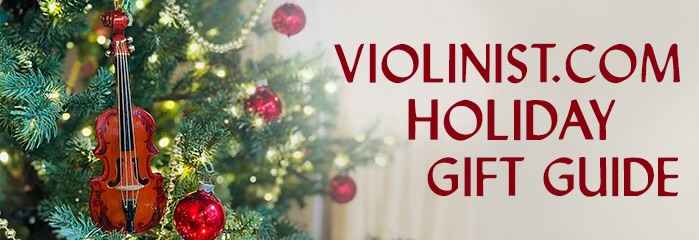
Rediscovering Aleksandr Kreyn
January 8, 2012 at 10:05 PM
The two articles below are reposted from the newsletter of Maestro Musicians called "Finding Meaning in Music". You may subscribe by visiting my blog HERE . The blog is updated weekly and the newsletter is updated bi-monthly and delivered by e mail.An Exploration of Aleksandr Kreyn and his Music

On December 3 and December 17, the Nagila Ensemble,, the newest division of Maestro Musicians, performed the String Quartet-Poème, Op. 9 by Aleksandr Kreyn at the Young Israel of Brookline and the Adams Street Synagogue, in Newton, MA, respectively. The work was well received and the ensemble looks forward to many more opportunities to perform this fascinating work!
Aleksandr Abramovitch Kreyn (1883-1951) was born in Nizhny Novgorod, Russia, on October 20, 1883. His father was a Klezmer violinist and six of his siblings became musicians. During his childhood, Aleksandr performed in his father’s band. At the age of 13, he entered the Moscow Conversatory as a cellist, studying with Von-Glen. He later studied composition with B. L. Yavorski and L. B. Nikolayev. Soon after, Kreyn developed a personal, vocal style.
Kreyn’s early influences were Scriabin, Ravel, and Debussy. Yet, his immersion in Hebrew folk-music and traditional melody had a profound emotional appeal to the composer. Some examples of Hebraic-influenced works are the opera Salome (1929), Jewish Sketches (1909-1910) for string quartet and clarinet, and the cantata Kadish, opus 33 (1921).
In the 1920s and 1930s as the Communists put a stranglehold on Jewish expression, Kreyn found it increasingly difficult to develop his uniquely personal idiom. In an attempt to appear sympathetic to the Soviet cause, he composed works such as Funeral Ode in Memory of Lenin (1926) and the symphonic oratorio The U.S.S.R.—Shock Brigade of the World Proletariat(1932). Yet, the composer bravely continued to write Jewish works well into the 1940s, such as the Second Symphony, dedicated to Jewish victims of persecution.
The opus 9 string quartet was written in 1909. Its nervous energy and complex harmonies are reminiscent of Scriabin and the French Impressionist composers. The Russian music scholar Leonid Sabaneiev describes the Poéme as follows: "It has a straight-forward, simple melodic line which Kreyn combines with pungent harmonies. This is a grateful work…by reason of its frank and unadorned, but lyrical melodies.”
---------------------------------------------------------
Interpreting Kreyn's Quartet-Poème, Op. 9
How to listen to this 20th Century Work
After the Nagila Ensemble’s inaugural concert on December 3 at the Young Israel of Brookline, we received comments and questions from a number of interested audience members about our rendition of the underplayed Quartet-Poème by Aleksandr Kreyn. Because of these questions and its unique tonal language, I found it helpful to expand on the importance of listening to the work within the proper historical context.
Kreyn’s work presents a conundrum. For the most part, the first violin part plays primarily melodic, lyrical lines. On the other hand, the rest of the string quartet is playing haunting harmonies, sometimes (and often) lacking a feeling of stability. What are we to make of this?
Kreyn’s opus 9 quartet was written in 1909, a time when composers were exploring new musical languages through the use of intense chromaticism. In other words, they were trying to break away from the regular scales that we all are familiar with in the Western tradition through the use of “foreign” notes. While these “foreign” notes might have been discordant to the ear, it was the hope of the composers that their ever expanding harmonic languages would eventually gain acceptance in the vernacular of sound, causing the next generation to consider their music as normal.
Kreyn was heavily influenced by the French Impressionist school of composing – a style championed by Ravel, Debussy, and Scriabin, which attempted to capture atmospheric feelings and abstract ideas in music. In Kreyn’s quartet, this is especially accomplished through the use of tremolos (quick vigorous repeating notes), and soft, “breathy” figures that alternate between two notes. As mentioned above, because of Kreyn’s breaking out of the traditional harmonic mold, one could argue that the expansion of his tonal language would fit perfectly into the Impressionist genre of vague abstraction.
Although, Kreyn was evolutionary in his music, he was not revolutionary. Staying true to the form of the masters of the past (Haydn, Mozart, and Beethoven), his quartet contains an introduction, exposition, development, and recapitulation, followed by a coda (an appendix). This is called Sonata Form.
After the long, slow mournful introduction, there are two main lyrical themes in the exposition which are continuously developed throughout the piece. The development is a playful interchange of short-long rhythmic figures between the instruments and an expansion on the themes of the exposition. The recapitulation brings back our opening material, seemingly verbatim. Yet, we later discover that it has been transposed higher so that the themes start on different notes. The piece ends on a C Major chord, affirming a sense of closure within the tonal system that we are all familiar with.
This entry has been archived and is no longer accepting comments.
Violinist.com is made possible by...
Dimitri Musafia, Master Maker of Violin and Viola Cases
International Violin Competition of Indianapolis
Violinist.com Holiday Gift Guide
Johnson String Instrument/Carriage House Violins
Subscribe
Laurie's Books
Discover the best of Violinist.com in these collections of editor Laurie Niles' exclusive interviews.

Violinist.com Interviews Volume 1, with introduction by Hilary Hahn

Violinist.com Interviews Volume 2, with introduction by Rachel Barton Pine






